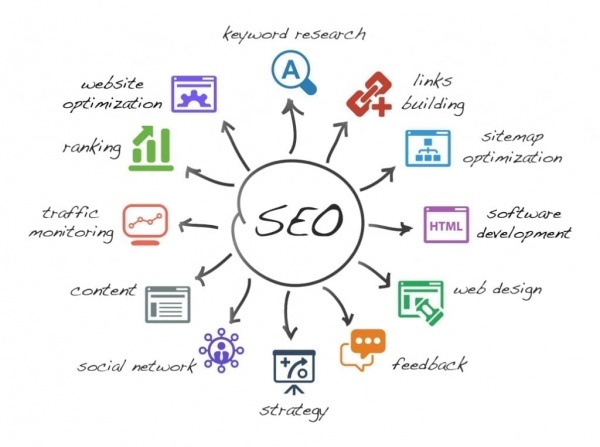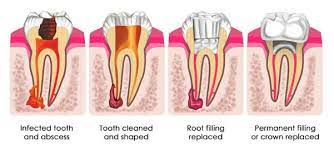Understanding the 200 Google Ranking Factors
Navigating the world of search engine optimization can be a complex task.
Especially when it comes to understanding Google’s ranking factors.
Google uses over 200 factors in its algorithm to rank websites. This might seem overwhelming, but don’t worry.
In this comprehensive guide, we’ll delve into these factors. We aim to provide a clear understanding of what they are and how they work.
From content quality and relevance to technical SEO aspects, we’ve got you covered. We’ll also explore user experience metrics, trust and authority factors, and on-page and off-page SEO.
We’ll discuss local SEO and personalization, and even touch on emerging trends.

This guide is designed to help SEO professionals, digital marketers, and website owners. If you’re interested in improving your website’s performance in Google search results, you’re in the right place.
By understanding these ranking factors, you can optimize your website more effectively. You’ll be able to make strategic decisions that can boost your visibility on Google.
So, are you ready to dive into the world of Google ranking factors?
Let’s get started.
Remember, SEO is a long-term game. It’s about understanding the rules and playing them to your advantage.
Welcome to the journey of understanding the 200 Google ranking factors.
The Evolution of Google’s Search Algorithm
Google’s search algorithm has come a long way since its inception.
In the early days, it was all about keywords and backlinks.
Over time, Google has refined its algorithm to provide more relevant and high-quality search results. It now considers over 200 factors when ranking websites.
These changes reflect Google’s commitment to improving user experience. The search giant continually updates its algorithm to better understand and serve its users.
Understanding this evolution is key to grasifying the current state of SEO. It helps us appreciate the complexity and sophistication of Google’s ranking factors.
Why Understanding Google Ranking Factors is Crucial
Google’s ranking factors are the backbone of its search algorithm. They determine which websites appear in search results and in what order.
Understanding these factors is crucial for anyone looking to improve their website’s visibility on Google. It allows you to optimize your site in a way that aligns with Google’s guidelines.
Moreover, a deep understanding of these factors can give you a competitive edge. It can help you identify opportunities to outrank your competitors in search results.
In essence, understanding Google’s ranking factors is the key to successful SEO. It’s the roadmap to achieving higher rankings and driving more organic traffic to your site.
How Google’s Ranking Factors Influence Your SEO Strategy
Google’s ranking factors play a significant role in shaping your SEO strategy. They serve as guidelines for what Google considers important in a website.
By understanding these factors, you can tailor your SEO efforts to align with what Google values. This can include everything from the quality of your content to the speed of your website.
For instance, if you know that Google values high-quality, relevant content, you can focus on creating content that meets these criteria. Similarly, if you know that mobile optimization is a ranking factor, you can ensure that your website is mobile-friendly.
In essence, understanding Google’s ranking factors allows you to make informed decisions about your SEO strategy. It helps you prioritize your efforts and invest your resources in areas that are likely to have the biggest impact on your rankings.
Ultimately, the goal is to create a website that not only appeals to your audience but also aligns with Google’s ranking factors. This is the key to achieving and maintaining high rankings in search results.
Section 1: Content Quality and Relevance
The Role of High-Quality, Relevant Content
High-quality, relevant content is the cornerstone of any successful SEO strategy. Google’s algorithms are designed to prioritize content that provides value to users.
This means that your content should be well-researched, accurate, and informative. It should provide answers to the questions that your audience is asking.
But quality alone is not enough. Your content also needs to be relevant to your audience. It should align with their interests, needs, and search queries.
Google uses various signals to assess the quality and relevance of content. These include factors like keyword usage, readability, and user engagement metrics.
For instance, if users spend a lot of time on your page and interact with your content, Google may interpret this as a sign that your content is high-quality and relevant.
In essence, creating high-quality, relevant content is about understanding your audience and meeting their needs. This is the key to achieving high rankings in Google’s search results.

Content Freshness and Its Impact on Rankings
Content freshness is another important ranking factor. Google’s algorithms are designed to prioritize content that is up-to-date and relevant.
This means that regularly updating your content can help improve your rankings. This could involve adding new information, updating outdated information, or simply refreshing your content to make it more engaging.
However, it’s important to note that content freshness is more important for some topics than others. For instance, news articles or blog posts on current events need to be updated more frequently than evergreen content.
In essence, content freshness is about providing your audience with the most accurate and relevant information at any given time.
The Importance of Content Depth and Comprehensiveness
Content depth and comprehensiveness are also important ranking factors. Google’s algorithms are designed to prioritize content that provides a comprehensive overview of a topic.
This means that your content should cover a topic in depth, addressing all the key points and subtopics. It should provide a complete answer to a user’s query, reducing the need for them to visit other sites.
However, it’s important to balance depth and comprehensiveness with readability. Your content should be easy to read and understand, even if it covers complex topics.
In essence, content depth and comprehensiveness are about providing your audience with a one-stop resource for all their needs.
Keyword Research and Optimization
Keyword research and optimization are foundational for on-page SEO success. They involve identifying the keywords that your audience is using to search for information, and then optimizing your content around these keywords.
This involves including your target keywords in key areas of your content, such as the title, headings, and body text. However, it’s important to use keywords naturally and avoid keyword stuffing.
Google’s algorithms are sophisticated enough to understand the context and relevance of your content, even without exact keyword matches. Therefore, it’s also important to include related keywords and phrases in your content.
In essence, keyword research and optimization are about understanding your audience’s search behavior and tailoring your content to meet their needs.
- Identify your target keywords.
- Include your keywords in key areas of your content.
- Use keywords naturally and avoid keyword stuffing.
- Include related keywords and phrases in your content.
Structuring Content for Better Readability and Engagement
Structuring your content for better readability and engagement is another important aspect of SEO. This involves organizing your content in a way that makes it easy for users to read and understand.
This could involve using headings and subheadings to break up your content, using bullet points or numbered lists to highlight key points, and using short paragraphs and sentences to improve readability.
It’s also important to use images, videos, and other multimedia elements to enhance your content and make it more engaging.
In essence, structuring your content for better readability and engagement is about making your content user-friendly. This can help improve user engagement metrics, which in turn can improve your rankings.
Section 2: Technical SEO Factors
The Significance of Mobile Optimization
Mobile optimization is a crucial aspect of technical SEO. With the advent of mobile-first indexing, Google now prioritizes the mobile version of your website for indexing and ranking.
This means that your website needs to be optimized for mobile devices. It should be responsive, meaning it should automatically adjust to fit the screen size of the device it’s being viewed on.

Your mobile site should also be easy to navigate, with clickable buttons and links that are easy to tap with a finger. The text should be large enough to read without zooming in, and the content should load quickly.
In essence, mobile optimization is about providing a seamless user experience on mobile devices. This can help improve your rankings, as Google rewards sites that provide a good user experience.
Page Speed: A Critical Ranking Factor
Page speed is another critical ranking factor. Google’s algorithms are designed to prioritize sites that load quickly, as this provides a better user experience.
This means that you need to optimize your site to load as quickly as possible. This could involve optimizing your images, minifying your CSS and JavaScript, and using a content delivery network (CDN).
It’s also important to monitor your site’s speed regularly, as this can help you identify and fix any issues that could be slowing it down.
In essence, page speed is about providing a fast and seamless user experience. This can help improve your rankings, as Google rewards sites that load quickly.
HTTPS as a Ranking Signal
HTTPS is a ranking signal used by Google. It stands for Hypertext Transfer Protocol Secure, and it’s the secure version of HTTP.
Sites that use HTTPS have an SSL certificate, which encrypts the data transferred between the user’s browser and the website. This helps protect the user’s information from being intercepted by hackers.
Google has confirmed that HTTPS is a ranking signal. This means that sites that use HTTPS are given a slight ranking boost over sites that use HTTP.
In essence, HTTPS is about providing a secure user experience. This can help improve your rankings, as Google rewards sites that provide a secure user experience.
The Importance of a Well-Structured Website
A well-structured website is another important aspect of technical SEO. Your website should have a clear hierarchy, with each page being easily accessible from at least one static text link.
Your site should also have a clear and intuitive navigation menu, with all the important pages being easily accessible. This can help users find the information they’re looking for, improving their user experience.
In essence, a well-structured website is about making your site easy to navigate. This can help improve your rankings, as Google rewards sites that provide a good user experience.
The Role of Structured Data in SEO
Structured data is a way of formatting HTML that uses specific vocabulary, telling search engines how to interpret content. It can help search engines understand the content on your site, which can improve your visibility in search results.
Structured data can be used to mark up all kinds of items, from products to events to recipes. It’s most commonly used to create rich snippets, which are enhanced search results that include additional information.
In essence, structured data is about helping search engines understand your content. This can help improve your visibility in search results, leading to higher click-through rates and potentially higher rankings.
Section 3: User Experience (UX)
Core Web Vitals and User Experience Metrics
Core Web Vitals are a set of metrics that Google uses to measure the quality of a user’s experience on a webpage. They include Largest Contentful Paint (LCP), First Input Delay (FID), and Cumulative Layout Shift (CLS).

LCP measures the time it takes for the main content of a page to load. A good LCP score is 2.5 seconds or faster. FID measures the time it takes for a page to become interactive, with a good score being less than 100 milliseconds. CLS measures the amount of unexpected layout shift of visual page content, with a good score being less than 0.1.
These metrics are important because they directly impact a user’s experience on your site. If your site takes too long to load, or if it’s not interactive or stable, users may leave and go to a competitor’s site.
Improving your Core Web Vitals scores can help improve your rankings, as Google rewards sites that provide a good user experience.
The Impact of User Engagement on Rankings
User engagement metrics, such as time on site, pages per session, and bounce rate, can also influence your rankings. These metrics give Google an idea of how users are interacting with your site.
If users spend a lot of time on your site, visit multiple pages per session, and have a low bounce rate, this signals to Google that your site is providing value to users. This can help improve your rankings, as Google rewards sites that provide a good user experience.
On the other hand, if users leave your site quickly, only visit one page per session, or have a high bounce rate, this could signal to Google that your site is not providing value to users. This could negatively impact your rankings.
In essence, user engagement metrics are about understanding how users are interacting with your site. This can help you make improvements to your site, leading to better user engagement and potentially higher rankings.
The Role of Multimedia in Enhancing UX
Multimedia elements, such as images, videos, and infographics, can enhance a user’s experience on your site. They can make your content more engaging and easier to understand, which can lead to better user engagement metrics.
For example, a well-placed image or video can break up large blocks of text, making your content easier to read. An infographic can help explain complex information in a visual way, making it easier for users to understand.
In addition to improving user engagement, multimedia elements can also help improve your rankings. Google’s algorithms are designed to reward sites that provide a rich user experience, which includes the use of multimedia elements.
In essence, multimedia elements are about enhancing your content and providing a rich user experience. This can help improve your rankings, as Google rewards sites that provide a good user experience.
Section 4: Trust and Authority Factors
Understanding E-A-T and Its Importance
E-A-T stands for Expertise, Authoritativeness, and Trustworthiness. It’s a framework that Google uses to evaluate the quality of content on a website.
Expertise refers to the level of knowledge or skill in a particular field. It’s about demonstrating that you or your organization possess the necessary expertise to provide accurate, reliable information.
Authoritativeness is about establishing your reputation as a trusted source of information. This can be achieved through positive reviews, high-quality backlinks, and mentions from other authoritative sources.
Trustworthiness relates to the credibility and reliability of your website. This includes having a secure website (HTTPS), clear and easy-to-find privacy policies, and accurate and transparent information about your business.
Understanding and implementing E-A-T principles is crucial for SEO. Google rewards websites that demonstrate high levels of E-A-T with better visibility in search results.
The Power of Backlinks in Establishing Authority
Backlinks, also known as inbound links, are links from other websites that point to your website. They are one of the most important ranking factors in Google’s algorithm.
A high number of quality backlinks signals to Google that your website is a trusted and authoritative source of information. This can significantly improve your website’s visibility in search results.
However, not all backlinks are created equal. Links from high-authority websites are more valuable than links from low-authority websites. Similarly, relevant backlinks (i.e., from websites in the same or related industry) are more valuable than irrelevant backlinks.
Building a strong backlink profile requires a strategic and ongoing effort. This can include tactics such as guest blogging, creating high-quality content that others want to link to, and building relationships with influencers and other relevant websites.
Domain Age, Authority, and Trustworthiness
Domain age, authority, and trustworthiness are also important ranking factors.
Domain age refers to how long a website has been in existence. Older domains are often seen as more trustworthy than newer ones, although this is not always the case.
Domain authority is a metric developed by Moz that predicts how well a website will rank on search engine result pages (SERPs). It’s based on a variety of factors, including the number and quality of backlinks.
Trustworthiness, as mentioned earlier, relates to the credibility and reliability of your website. This includes factors such as having a secure website, clear privacy policies, and accurate business information.
While you can’t control your domain age, you can work on improving your domain authority and trustworthiness. This can help improve your website’s visibility in search results.
Section 5: On-Page and Off-Page SEO
On-Page SEO: Optimizing for Google’s Crawlers
On-page SEO refers to the practice of optimizing individual web pages to rank higher in search engine results pages (SERPs). It involves optimizing both the content and the HTML source code of a page.
Key on-page SEO factors include title tags, meta descriptions, and header tags. Title tags are the clickable headlines displayed in SERPs. They should be descriptive and contain your target keywords.
Meta descriptions provide a brief summary of your page’s content. While they don’t directly influence rankings, they can impact click-through rates. A compelling meta description can entice users to click on your page in the SERPs.

Header tags (H1, H2, H3, etc.) help structure your content and make it easier for readers to navigate. They also help search engines understand the content of your page.
Other important on-page SEO factors include keyword usage, content quality, and internal linking. Using your target keywords in your content (without keyword stuffing) can help search engines understand what your page is about.
High-quality, relevant content is crucial for on-page SEO. It can help attract and retain users, increase dwell time, and improve your chances of earning backlinks.
Internal linking helps establish site architecture and spread link equity. It can also improve user navigation and help search engines crawl your site more effectively.
Off-Page SEO: Building a Strong Backlink Profile
Off-page SEO refers to actions taken outside of your own website to impact your rankings within SERPs. It primarily involves building a strong backlink profile.
Backlinks are a crucial part of off-page SEO. They signal to search engines that your website is a trusted and authoritative source of information.
However, not all backlinks are created equal. Backlinks from high-authority, relevant websites are more valuable than those from low-authority, irrelevant websites.
Building a strong backlink profile requires a strategic and ongoing effort. This can include tactics such as:
- Guest blogging on relevant websites
- Creating high-quality, link-worthy content
- Building relationships with influencers and other relevant websites
- Participating in relevant forums and online communities
Remember, quality over quantity is key when it comes to backlinks. A few high-quality backlinks are more valuable than a large number of low-quality ones.
Off-page SEO also involves social signals (likes, shares, tweets, etc.) and brand mentions. While their direct impact on rankings is still debated, they can help increase visibility and drive traffic to your site.
Section 6: Local SEO and Personalization
The Influence of Local SEO on Rankings
Local SEO is a crucial aspect of search engine optimization. It focuses on optimizing a website to be found in local search results.
Local searches are often intent-driven, with users looking for specific products or services near them. By optimizing for local SEO, businesses can attract these potential customers and drive more foot traffic to their physical locations.
Key factors in local SEO include Google My Business listings, local keywords, and local citations. Google My Business is a free tool that allows businesses to manage their online presence across Google, including Search and Maps.
Local keywords refer to keywords that include specific geographic locations. For example, “Italian restaurant in New York City” is a local keyword.
Local citations are online mentions of a business’s name, address, and phone number. They can come from various sources, including business directories, websites, and social platforms.
Personalization in Search Results
Personalization in search results refers to the practice of tailoring search results to individual users based on their behavior, location, device, and other factors.
Google uses personalization to deliver more relevant search results to users. For example, a user searching for “coffee shops” will see different results based on their current location.
While personalization can make it more challenging to rank universally for certain keywords, it also presents opportunities for businesses to reach their target audience more effectively.
For example, businesses can use location-based keywords to target users in specific areas. They can also optimize their websites for mobile devices to reach users who are searching on the go.
Remember, while personalization can influence search results, the fundamentals of SEO remain the same. High-quality, relevant content and a strong backlink profile are still crucial for ranking well in search results.
Section 7: Emerging Trends and Future Considerations
The Role of Artificial Intelligence in SEO
Artificial Intelligence (AI) is playing an increasingly significant role in SEO. Google’s use of AI in its search algorithm, particularly RankBrain, is a prime example.
RankBrain is a machine learning-based component of Google’s algorithm. It helps Google understand the context and intent behind search queries, especially complex or ambiguous ones.
AI is also being used in SEO tools and software. These tools can analyze vast amounts of data, identify patterns, and provide insights to help optimize websites for better search visibility.
As AI continues to evolve, it’s crucial for SEO professionals to stay informed about the latest developments. Understanding how AI impacts SEO can help you adapt your strategies and stay ahead of the competition.
Voice Search Optimization
Voice search is another emerging trend in SEO. With the increasing use of digital assistants like Siri, Alexa, and Google Assistant, more people are using voice commands to search the internet.
Voice search optimization involves making your website more accessible to voice search devices. This often includes using long-tail keywords and conversational language, as voice searches tend to be more conversational and question-based.
It’s also important to ensure your website is mobile-friendly, as many voice searches are conducted on mobile devices. As voice search continues to grow, optimizing for it can give you a competitive edge.
Preparing for Future Google Algorithm Updates
Google regularly updates its search algorithm to improve the quality of search results. These updates can sometimes cause significant shifts in search rankings.
To prepare for future updates, it’s important to stay informed about SEO trends and best practices. Following Google’s guidelines and focusing on creating high-quality, relevant content is the best way to future-proof your SEO strategy.
Regular website audits can also help you identify and fix any potential issues that could negatively impact your rankings. By staying proactive and adaptable, you can navigate Google’s algorithm updates and maintain your website’s visibility in search results.
Conclusion: Integrating Google Ranking Factors into Your SEO Plan
Understanding Google’s 200 ranking factors is a crucial part of any successful SEO strategy. These factors provide a roadmap to optimizing your website for better visibility and ranking in Google’s search results.
However, it’s important to remember that SEO is not a one-size-fits-all solution. Each website is unique, and what works for one may not work for another. Therefore, it’s essential to tailor your SEO strategy to your specific needs and goals.
Moreover, SEO is a long-term commitment. It requires ongoing effort and adaptation to changes in Google’s algorithm and emerging trends. By staying informed and proactive, you can ensure your website stays relevant and competitive in the ever-evolving digital landscape.
In conclusion, while understanding Google’s ranking factors is important, it’s equally important to integrate them into a comprehensive, adaptable, and data-driven SEO plan. This will help you achieve sustainable success in your SEO efforts and ultimately, in your online presence.
Additional Resources and Tools for SEO Success
To further enhance your SEO efforts, there are numerous resources and tools available. These can help you gain deeper insights, automate tasks, and stay updated on the latest SEO trends and best practices.
Some of the most popular and effective SEO tools include Google Search Console, SEMrush, Moz, Ahrefs, and Yoast SEO. These tools offer a wide range of features, from keyword research and backlink analysis to technical SEO audits and on-page optimization.
Here are some recommended resources for further learning:
- Google’s SEO Starter Guide
- Moz’s Beginner’s Guide to SEO
- SEMrush’s SEO Toolkit
- Ahrefs’ SEO Blog
- Yoast SEO’s Blog
- RankHigh SEO Blog
Remember, the key to SEO success is continuous learning and adaptation. By leveraging these resources and tools, you can stay ahead of the curve and ensure your website’s continued growth and success.









Leave a Reply